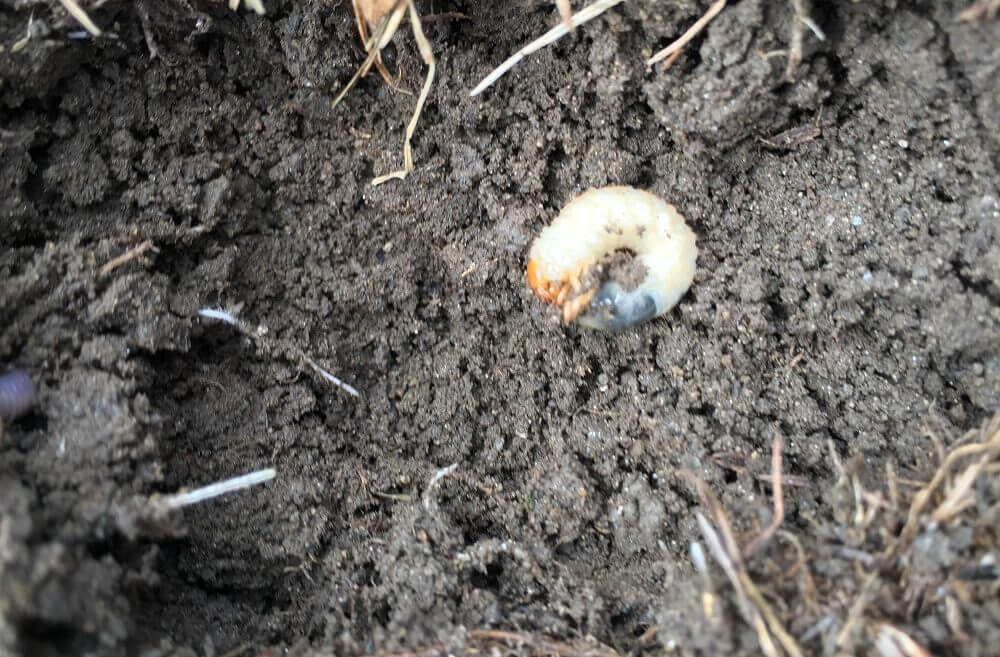If you have a sunny lawn, you may have already suffered the wrath of grubs. If you have not yet experienced grub damage and have a sunny location, please give serious consideration to grub control “insurance” by applying a preventative product.
Unseen by you, there are at least six types of grubs that can inhabit, grow, and eat your lawn from below the soil surface. By the time grub damage is visible in the spring or fall, the harm has already been done. Grubs damage the turf by eating the roots of the grass. The browning you see on the surface is the result of a damaged root system unable to supply water to the leaves. In some circumstances, irrigation can actually reduce overall damage in mild to moderate grub infestations. Additionally, there may be loss of turf by crows tossing chunks of grass aside or skunks making a mess of surrounding brown, dead patches. Preventing grubs from taking hold in your lawn can prevent hundreds to thousands of dollars of damage, as you should expect some amount of renovation will be necessary.
There is good news. Prevention is the best way to stop this kind of lawn horror story from ever happening and a new product called Acelepryn is your best bet for successful grub suppression.
Since Acelepryn is not an older class of materials known as neonicotinoids, you can be reassured that your bees, ladybugs, kids, and pets are safe while the grubs are effectively reduced to a level where turf damage will not occur. (See my March 31, 2016 post Neonicotinoids, Bees and Turf Care for more information.) Better yet, the earlier in the season you apply Acelepryn, the less product is required versus a late August treatment when a higher rate is needed. Early is better for this reason alone when targeting grubs in your lawn.
But what about milky spore you say? This long-standing old grub control only targets one beetle grub out of the six or more in New England. If you like these odds, I have a Vegas casino who would love to give you house credit on the roulette wheel. Not only does milky spore just target one specific grub, the cold winters are shown to reduce the ultimate effectiveness of this organic grub control.
Once final word on grubs. Trying to spray or treat for grubs once their damage is visible means the prevention phase has passed. Options for curative control of grubs provide greatly diminished results. Depending upon the time of year, curative efforts range from only 20% to 60% effective, while preventative measures can have a 99% success rate when done properly. Prevention is the most effective, the safest and most cost-efficient way to control grubs.
May into summer is a great time to begin grub control applications with the recommended Acelepryn. Remember, the earlier the product is applied the lower the application rate is required for successful results to protect your lawn this year and into the future. If you are concerned about grubs in your lawn, contact your local lawn care professional today to discuss options.

Prevent Grub Damage
Tags:
chippers
, nh lawn care companies
, grubs
, milky spore
, white grubs
, upper valley lawn care
, nh lawn care
, vt lawn care
, Neonicotinoids
, neonics

